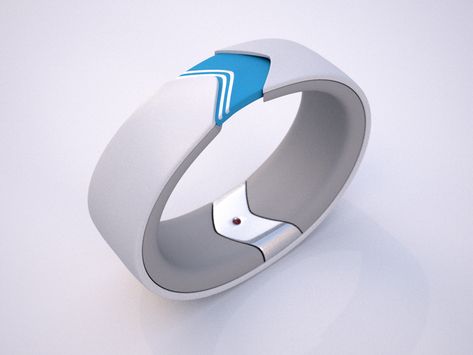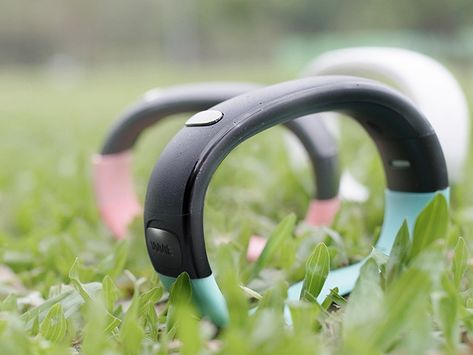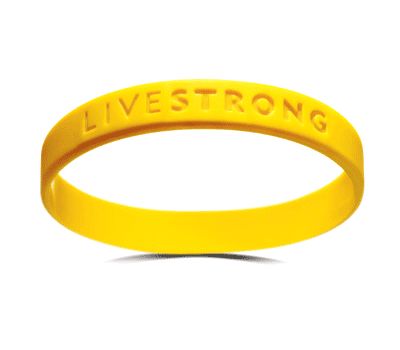Telling the Wristband for Immunisation Alert (WIA) Story: The Innovator’s Perspective
Rejoice Hassan Tweet
One of the prominent factors that contribute to poor immunization timeliness and completion amongst rural women in Nigeria is a lack of knowledge on the importance of immunization and a lack of awareness of the immunization schedule of their children/wards. Over 61.6% of mothers in northern Nigeria admitted to not vaccinating their child(ren) on time or not completing immunisation doses for their child(ren) because of ignorance.1 The level of a mother’s or caregiver’s education has also been shown to have a profound effect on their children’s or ward’s immunization. A 2018 study conducted in north-western Nigeria on the factors affecting the completion of childhood immunization found a higher likelihood of immunization timeliness and completion with a higher education level of the mother or caregiver.2
To address the challenges with immunization timeliness and completeness, Sidney Sampson, a proponent of technology as an enabler of innovation in healthcare, and Managing Partner/CEO at Sydani Group, created the “WIA” – Wristband for Immunization Alert, in response to the Bill and Melinda Gates Foundation (BMGF) Grand Challenges Explorations call in 2017. Out of over 1,500 applications globally, the WIA innovation was one of the 51 awardees of the grant. From 2018 – 2020, the WIA was designed, produced, and piloted among caregivers in Kano state, Nigeria. With the completion of the pilot phase, Sidney shares his story on how the journey began, the challenges experienced, success stories, and the next steps.

About WIA
WIA is a wristband designed to remind caregivers to take their children for immunization on time. Sidney describes it as “an innovative device developed to help mothers, especially those in rural areas who can barely read or write, to get their children immunized on time”. The WIA was distributed for free at health facilities nearest to the mothers after childbirth or during their first immunization visit. To activate the device, a health worker at the facility configures the timer to remind mothers and caregivers of the next immunization visit. The inbuilt reminder system initiates the device to start blinking red light at the beginning of the week of the next vaccination visit, prompting the caregiver/mother to take the child(ren) to the health facility for immunization.

How the journey began
The concept of the WIA was birthed following Sidney’s time in Kano and Bauchi states, supporting the state governments to strengthen their Routine Immunization (RI) systems through the BMGF-funded Northern Nigeria Routine Immunization Strengthening program, where he had first-hand exposure to the challenges mothers/caregivers face in keeping up with RI timeliness and completion.
In addition to illiteracy, another major reason for the poor immunization timeliness was the inefficient town crier system practiced in these rural communities. Providing more context, Sidney explained that in rural areas, the leading practice was the town crier system, where the village representative or town crier utilizes a gong to announce immunization outreaches to caregivers within their community. This method was inefficient as it provided the same message to all caregivers in the community irrespective of their children’s immunization schedule. This message, he said, would not mean a lot to the caregivers if they were unable to track the intervals between each immunization visit. In an ideal scenario, Sidney explained that “there are recommended intervals between each vaccination. After the first dose at birth, infants should receive a second dose after 6 weeks. However, this was not the situation for most uneducated or illiterate caregivers in Kano state who are unable to read and track the 6-week timeline on a calendar, making it difficult to know when to go back to the health facility for the next vaccination. This reason alone made the town crier system inefficient.”
The initiative to use phone calls and reminder text messages to prompt caregivers for immunization was also piloted in some states but could not work in low-resource settings and rural areas with limited network coverage. Sidney explained that “the remoteness of most rural areas in Nigeria and the poor telecommunications network, makes the use of phone calls and SMS reminders for immunization not feasible, thus creating an opportunity for the WIA, and making it the best option for any uneducated caregiver in a remote rural area to get an active reminder to immunize her ward(s) timely. Hence, the WIA was introduced to help these categories of persons and ensure that they have an active RI reminder system.”

Success of the WIA
On the success of the WIA, Sidney explained that “prior to the introduction of the wristband, baseline data3 showed that 65% of mothers/caregivers brought their child(ren) either too early or late for vaccination. But as a result of the pilot, data collected and analysed showed that WIA contributed to an increase in the immunization timeliness by 34% in the four pilot PHC facilities in Kano state3, a feat we are extremely pleased with”.
On the functionality of the WIA, the feedback from the implementation team was that “caregivers expressed excitement with the functionality of the WIA and its red blinking timer, as it helped to remind them of when to take their wards for the next immunization visit. Healthcare providers were particularly impressed with its user-friendliness as they reported that it did not add any extra burden to their routine work and proved very useful in reminding caregivers to adhere to the immunization schedule and timelines for their wards. We believe that it achieved all that the team set out for it to accomplish”.
On its acceptance, Sidney said, “WIA’s unique features – its distinct shape, lightweight, and the green “gamji tree” sign in its centre, symbolic of the unparalleled position of the woman in the family – encouraged its acceptance amongst the caregivers within the rural Kano community. In fact, caregivers became brand ambassadors for the WIA as they began to spread the news amongst their peers, thus increasing its demand and uptake at the four pilot health facilities.” Another factor that contributed to its acceptance was the human-centered design approach that was employed during the development of the WIA.

Challenges encountered
Despite the success that the team recorded with the pilot phase of WIA, a good number of challenges were experienced at the product design and development stage. The biggest one was finding a manufacturer who would develop the WIA within the available budget. He explained that “the initial engineering design was done by an American firm which had put together the expected components and functions of the band in a way that will be shared with the manufacturer for production”. However, after concluding with the designers, the team struggled to find a manufacturer who could produce the band at the expected quantity and quality given the time constraint within Nigeria and in the United States. “We had searched for manufacturers locally in Nigeria and couldn’t find one that could produce the band within budget and desired quality as the samples we obtained from Nigerian manufacturers were not up to the desired standard. We also searched in the USA where the engineering design was done but couldn’t move forward, as the costs from there were too high and above budget”.
After multiple failed attempts to find a manufacturer in the USA and in Nigeria, the team got a breakthrough as Sidney found a Chinese manufacturing company through a friend working in a Chinese firm in Nigeria, and the first set of samples was delivered in 2019. The delay in finding the right manufacturer also stalled the implementation of the WIA pilot phase. Although project inception activities started in early 2018, samples were not available in Nigeria until late 2019, which was when the distribution of WIA at pilot health facilities commenced.

Next steps
According to Sidney, his team hopes to commence the second phase of WIA with an improvement of the device, as there is a plan to advance the design and engineering of the band in the medium term, such that it can store other immunization data and become an electronic immunization record. “We will try to add on more features/functionality to the band with a storage component that will provide more value to health workers and some additional chips that might help link it up to the federal health system. The Federal Ministry of Health (FMoH), and the National Primary Health Care Development Agency (NPHCDA) have plans to roll out special devices for collecting immunization data across all health facilities in the country. We plan to update the band to enable it to synchronize with the federal health system database and allow for data sharing and/or integration between both systems (the wristband and the federal health system).”
Secondly, Sidney hopes that one day, the band will replace the RI cards currently used in health facilities to assist mothers with the retention of their child(ren)’s immunization data and make RI data more readily available for action by all stakeholders across all levels.
Finally, Sidney explained that the organization’s vision is to expand the scope of the band beyond immunization to other PHC services like antenatal, malaria, and other essential care services. “The features will not just track RI schedules but also health appointments across these services, such that it is of more value to the mother, the child, the community, and the health system”.
“Although WIA holds promise for improving RI timeliness and completion in rural communities in Nigeria, funding is a key constraint to achieving scale-up, and this has stalled the commencement of the second phase of WIA innovation”, Sidney said. “However, we are excited about its potential beyond immunization, and are working to identify potential investments and/or partnerships to initiate the second phase of the WIA and accelerate the gains”. In conclusion, WIA has huge potential to ease immunisation systems, maternal and childcare data collection, improve the timeliness and completion of RI, and in turn, reduce maternal and newborn mortality and morbidity in Nigeria.
References
1. Oladepo O, Dipeolu I O, Oladunni O. Nigerian rural mothers’ knowledge of routine childhood immunizations and attitudes about use of reminder text messages for promoting timely completion. J Public Health Pol 2019: 40, 459–477 .
2. Christopher O. The Social Determinants of Routine Immunisation in Ekiti State of Nigeria. Ethno-Med. 2009 3. 49-56.
3. Sampson. S, Atobatele S, Adenipekun A. Report of WIA Intervention Findings. Kano state Primary Health Care Board 2020




